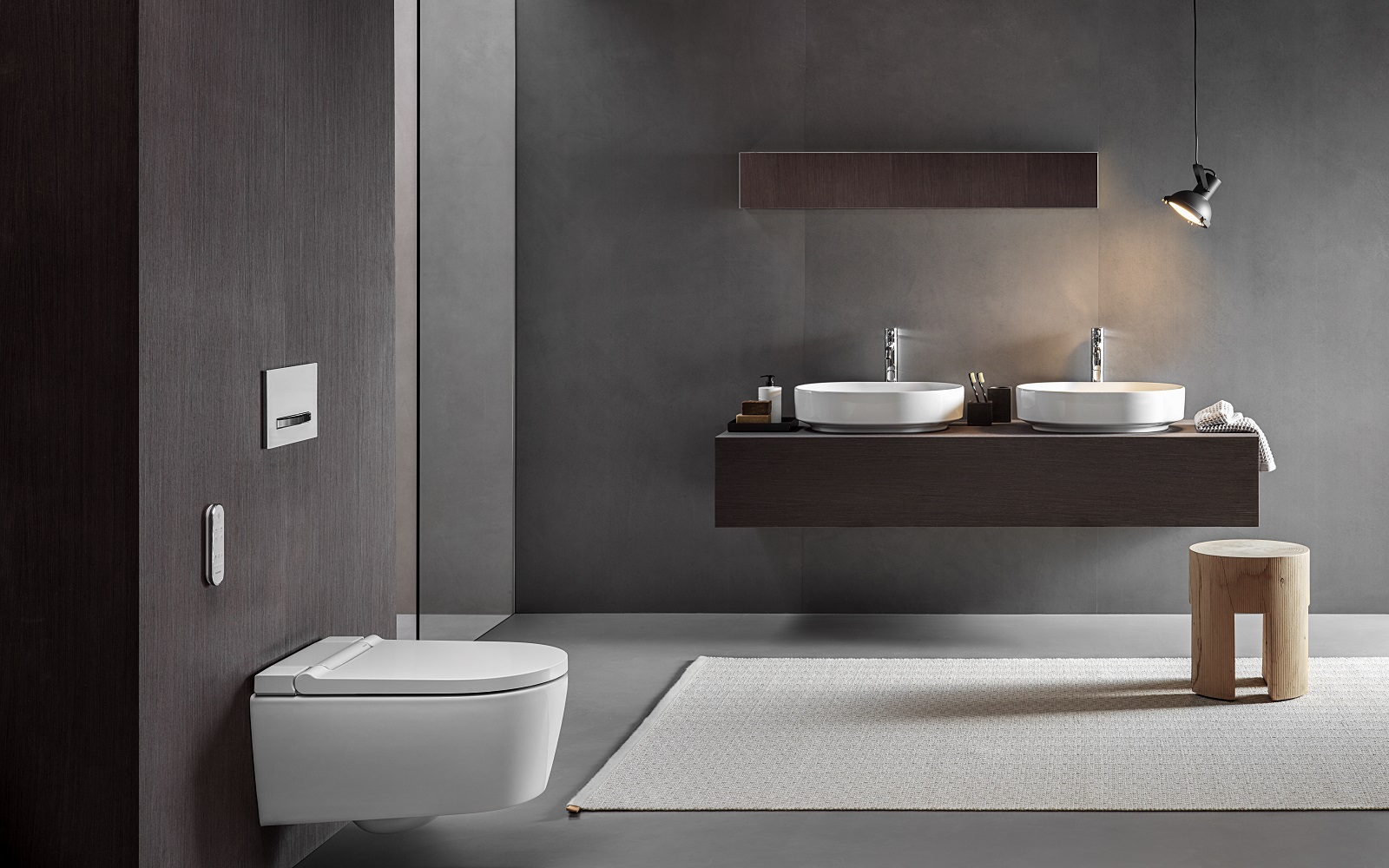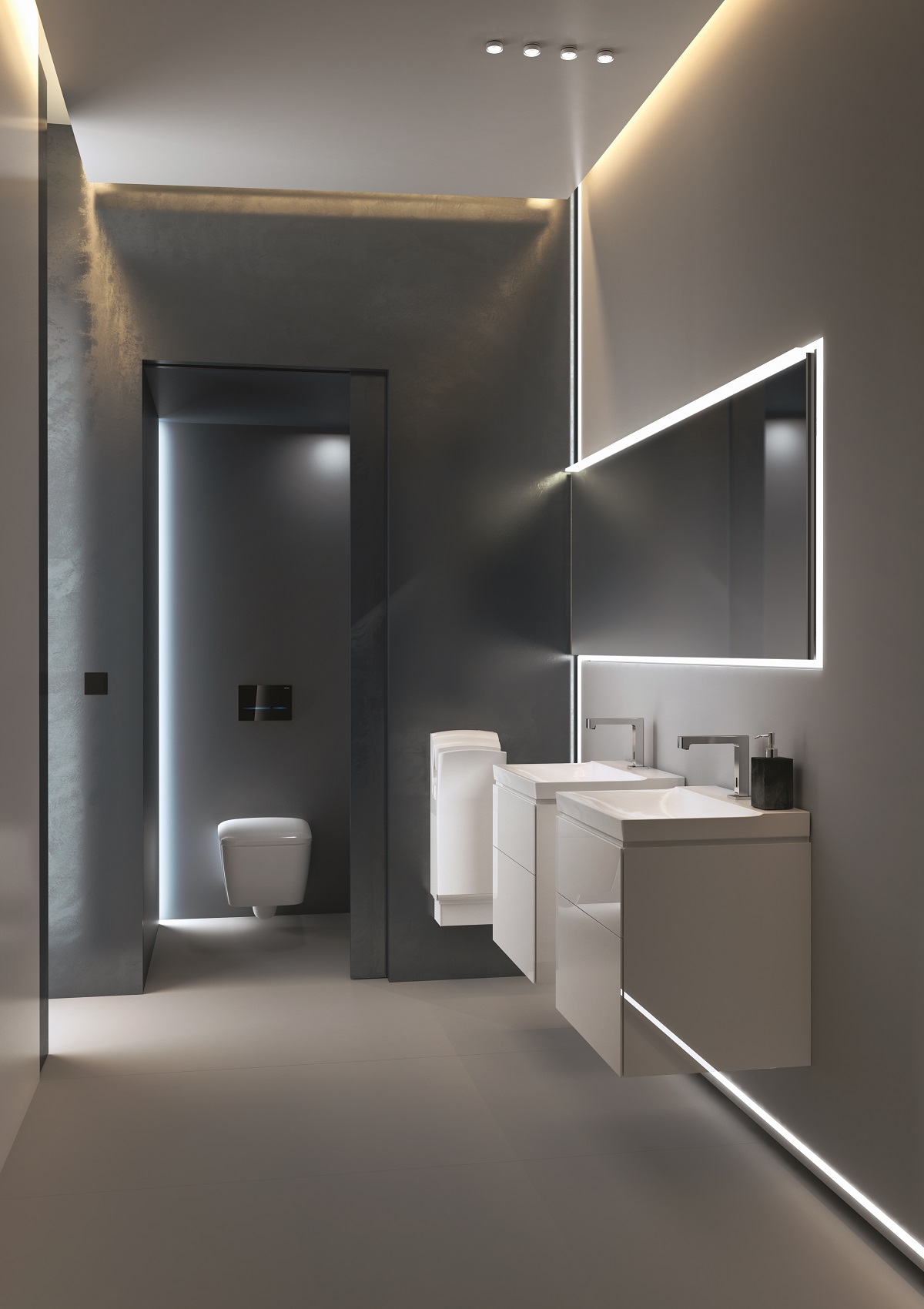Having teamed up with some of the leading experts in the world of hospitality design, Gerberit explores the challenges being faced by the industry in its Hotel Guest Experience Report for 2022. With chapters from Sensory Designer Ari Peralta, Architects Balkaran Bassan and Cecilia Vodret, and Sound Architect Tom Middleton, here is a little more about the contributors and the content behind the report…

Through the report, Geberit explores several themes within the broad parameters of hotel trends and design, from the use of technology and maximisation of space, through to concepts around wellbeing and the role of sound.
With wellbeing and smart tech being one of the report’s main themes, Sensory Designer and Neuroscientist, Ari Peralta, kicks off the discussion and explores the importance of human wellness in hospitality design by looking at the role of smart technology in amplifying positive guest experiences in his chapter ‘Beyond Smart: Sustainability, Wellbeing & Experience’. Ari is joined by other experts, including architect Cecilia Vodret, Head of Interior for Speri design’s London office who examines how hotels can make the best possible use of every space available to boost both revenue and guest wellbeing. Balkaran Bassan, Senior Designer at Areen Design, predicts in the report that we will increasingly be combining the individual user experience with an emphasis on wellbeing. And finally, Sound Architect, Tom Middleton looks at the growing importance of the bathroom and why it can no longer remain just a transactional and transitory space for guests.
Peralta takes the report into his world with a closer look at Smart Wellbeing. With smart devices becoming must haves for today’s connected consumer, and technology shaping the future of hospitality, smart tech enhances user experience even in the bathroom, with innovation like shower toilets incorporating features such as built-in orientation lighting with different atmospheric colours, or odour extraction and user recognition. The intuitive nature of smart products like this make the bathroom experience a relaxing one.
“From new user interfaces to intuitive design, technology is rapidly evolving…subsequently transforming the built environment from the inside out,” said Peralta. “This shift from analogue to automated hotel operations represents a unique opportunity to bring wellbeing into the conversation and reimagine what a smart hotel can do.”
“There are some smart devices that many designers and hoteliers may not think about immediately, including smart bathroom technology,” continued Peralta. “A smart bathroom connects with your smart home devices (including smartphones and voice control devices) to provide you with complete control and customisation of your bathroom experience. Smart bathroom gadgets can offer many benefits including convenience, reduced resources and improved health.”
With space maximisation another of the report’s main themes, architect Cecilia Vodret, Head of Interior for Speri design’s London office examines how hotels can make the best possible use of every space available to boost both revenue and guest wellbeing in her chapter ‘The Importance of Space Maximisation in Hospitality Settings’.
The importance of space and its impact on our wellbeing cannot be underestimated. After being confined to one place and restricted to our homes for much of the past couple of years, the need to break out and exist in a fresh and fulfilling space is instinctual, and this is what Vodret explores in her chapter of the Hotel Guest Experience Report.
Using space intelligently is essential to creating a sanctuary in the washroom as Vodret comments: “The washroom should be elevated to a sanctuary to provide a restful, serene retreat. To achieve this, it is key that the space is used efficiently; harmonic ratio in defining the room’s washroom area should be at the forefront of the design, ensuring that flow and guest experience are prioritised.”
Balanced room proportions are key and harnessing cleverly designed small ceramics can achieve this. Geberit’s iCon and Selnova Compact ranges, for instance, incorporate a short projection design to efficiently maximise the space. Additionally, making the best use of innovations like wall-hung technology can expand a room. The Geberit Duofix frame can support wall hung WC, making a larger portion of the floor visible and so allowing the guest to perceive the area as more spacious. Combining space saving innovations that work together can not only enlarge the feeling of the room, but also creating a refreshing, relaxing aura in the space.
“Proportions and ratio have been cleverly used throughout human history to enhance and maximise the space,” said Vordret. “As Vitruvius, Roman architect of the 1st century BC, once said, ‘beauty is produced by the pleasing appearance and good taste of the whole, and by the dimensions of all the parts being duly proportioned to each other’. Those are valuable lessons that are very much applicable today.”
Moving onto user experience and wellbeing in the report, Balkaran Bassan, Senior Designer at Areen Design*, predicts that we will increasingly be combining the individual user experience with an emphasis on wellbeing. Bassan details how hotel guests will expect thoughtful experiences and solutions that allow them to detach from the stress of travel and find their home away from home in his chapter ‘The Case for Change’.

Image caption: Editor Hamish Kilburn speaking to Balkaran Bassan (Areen Design) and other designers about a WFHotel concept that was designed for HIX | Image credit: HIX
He goes on to discuss how now, more than ever, the bathroom is more than a singular functional room but also a sacred space, where users can retreat from everyday life for some much-needed relaxation. The pandemic vastly affected people’s attitudes towards wellbeing and now, creating a comforting space is essential. And when it comes to creating this all-important haven for calm, hoteliers must take note of the gradual shift towards ‘lifestyle’ design and service.
“Whilst there was a danger that such an approach could, like previous trends, stagnate, this concept could still align well with the personalisation and flexibility elements,” said Bassan. “It could also offer the potential for growth and longevity if the elements of wellbeing and ‘the bigger picture’ were also taken on.”
The world is opening up once more giving hoteliers the opportunity to impress visitors, offering a meaningful experience to those who have been eagerly waiting and have high expectations for their stay. Bassan concluded, “As opportunities to travel are constantly in fluctuation – and significantly more difficult than they were before – hotel guests will expect thoughtful experiences and solutions that allow them to detach from the stress of travel and find their home away from home.”
Finally, exploring the concept of sound in the report, Tom Middleton discusses how hoteliers now have a social responsibility to design a ‘temple of tranquillity’ with empathy and how the sector can support the real human challenges of our life navigating a new normal in his chapter ‘Your Temple of Tranquility’.

Image caption: Tom Middleton joined a panel at the Independent Hotel Show on sensory design in hospitality. | Image credit: Independent Hotel Show
The impact of sound on our wellbeing should not be underestimated. Our ears work even when we’re asleep, with the brain continuing to process the sounds it detects. Unwanted noise pollution – such as dripping taps, loud drains or a disruptive toilet flush – can cause hotel guests to wake up groggy, unrested and having never entered the crucial deep REM sleep our body and mind needs.
In his chapter Middleton comments: “We rarely give ourselves a chance to truly switch off, disconnect and invest time in wellbeing practices to build greater resilience. Ask yourself one simple question: where do you really get time on your own to escape? To take a moment to breathe, clear your head, come up with ideas or solve problems. I think most would agree the bathroom is the place for all of these.”
Managing the acoustics within a bathroom is key. Geberit’s Silent-db20 piping can reduce noise transfer from draining water from washbasins or showers. Wall-hung toilets with concealed cisterns and pre-wall frames such as Geberit Duofix can prevent noise from travelling down the wall and through the floor. Simple product innovations like this can vastly transform the guest experience into one that produces nothing but positive and peaceful emotions.
“With a socially responsible person-first sensory design approach I believe we can optimise our bathrooms,” continued Middleton. “Hotel guest bathrooms in particular need to be a safe and peaceful haven of optimal wellness where we can escape the noisy, stressful world outside. If we assess the time spent in the bathroom each day, we can identify those micro-moment opportunities to build new healthy self-care habits, behaviours and rituals to support our wellbeing.”
Harnessing the power of sound and smart technology, maximising space, while focussing on user experience and wellbeing to create an escape for guests away from the stresses of everyday life is sure to enhance the experience of the customer, help build stronger, more positive memories and keep them coming back. The hotel washroom may be at the heart of this.
*Since publication of the report, Bassan has moved from Areen Design to Blacksheep as Senior Design Lead.
Geberit is one of our Recommended Suppliers and regularly features in our Supplier News section of the website. If you are interested in becoming one of our Recommended Suppliers, please email Katy Phillips.
Main image credit: Geberit
























